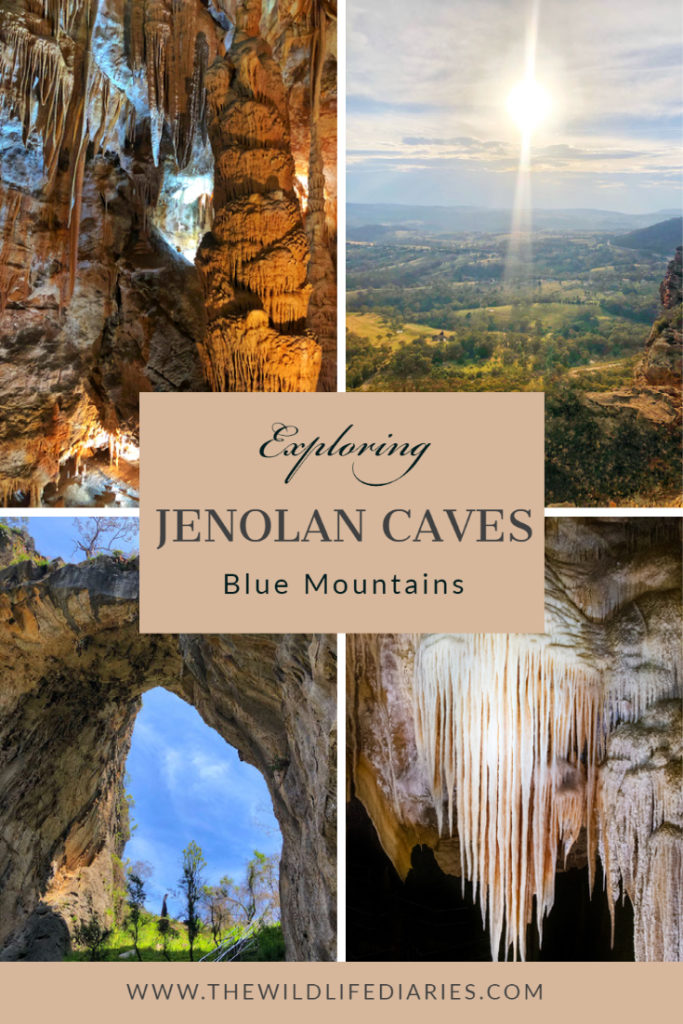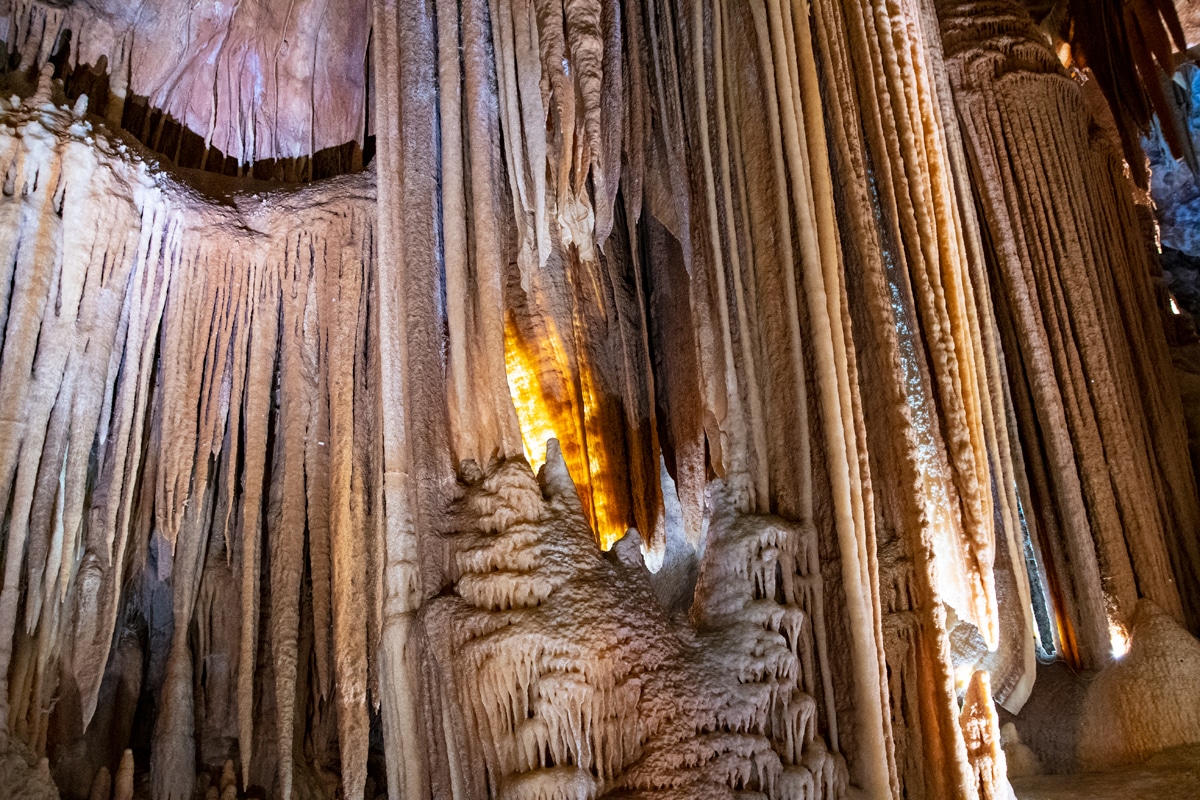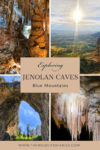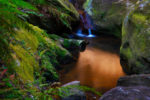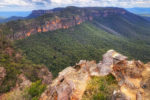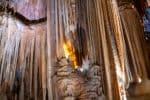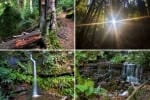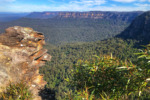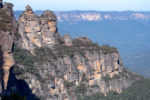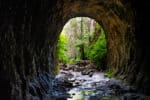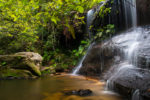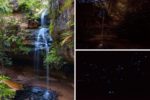One of the most spectacular sites in the Blue Mountains World Heritage Area is the Jenolan Caves. Decorated with jaw-dropping limestone crystal formations, Jenolan Caves are Australia’s largest and most spectacular cave system that is open to the public.
The caves are also the oldest in the world, having formed 340 million years ago. The only older rocks I visited in Australia are the 460-million-year-old Glasshouse Rocks in Narooma.
More than 300 caves have been discovered in Jenolan, but tourist activities are limited to the 11 show caves and a few adventure caves.
After the fires and the floods of 2019, like many other areas in the Blue Mountains, Jenolan Caves have been closed for most of 2020 as repairs were carried out in the caves, the buildings, and the access road. In fact, the winding Jenolan Caves road gets damaged by the weather somewhat frequently, and it’s always best to check whether the road is open, or if there is an alternative route currently in place for accessing the caves.
Jenolan caves are a very popular attraction, and if you are visiting on a weekend, it is a good idea to pre-book your cave tour here.
You can also visit Jenolan Caves on a private tour from Sydney if you prefer not to worry about the logistics of getting to the caves and back to Sydney.
Here is everything you need to know to plan your Blue Mountains Jenolan Caves adventure
Exploring Blue Mountains Jenolan Caves
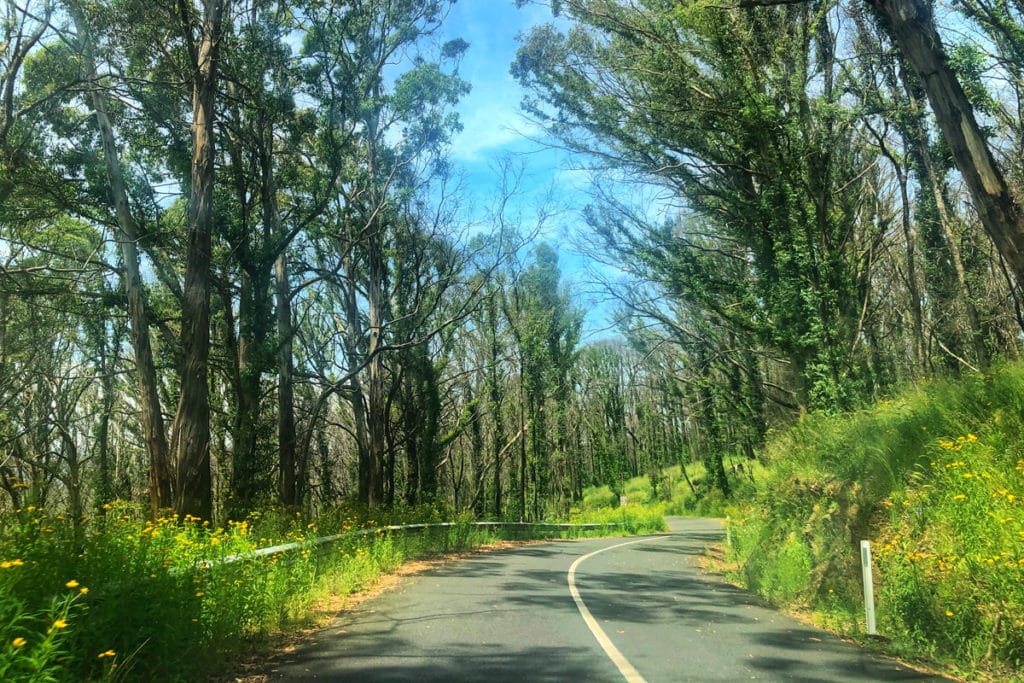
The last time we visited the caves was on a particularly hot November day, and while Sydney cooked in 41-degree heat, we enjoyed a balmy but bearable day at Jenolan Caves.
We explored the caves and the surrounding area with Wolfgang and Hedi from Hiking in the Blue Mountains. We’ve been very fond of Wolfgang and Hedi since our initial adventure on the Glow Worm Tunnel hike, and we prefer to explore the further reaches of the mountains with them.
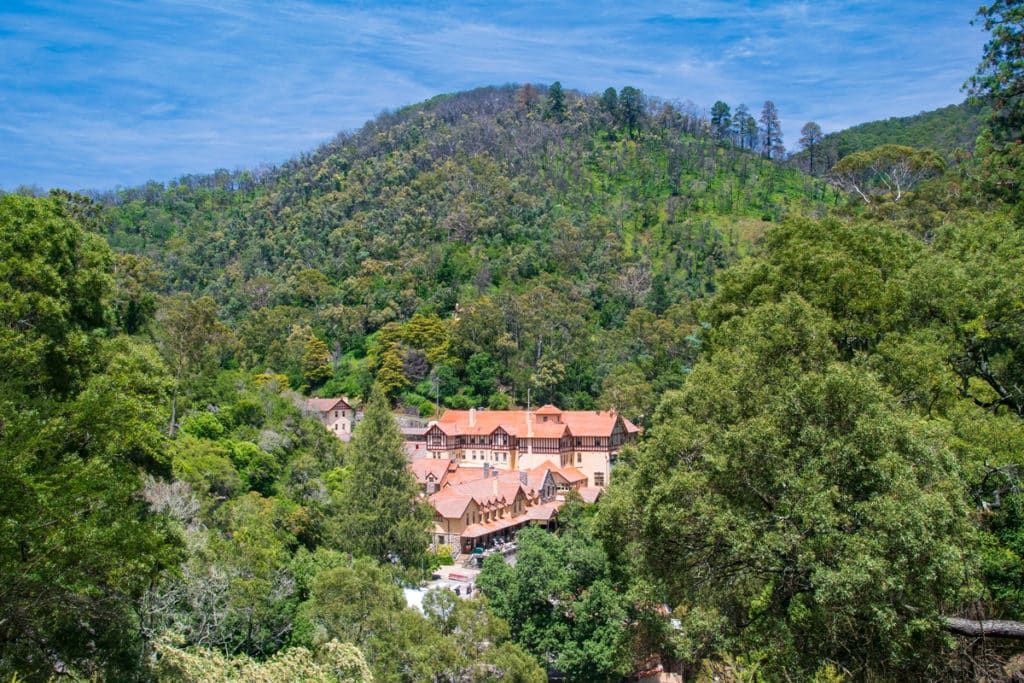
We drove from Wentworth Falls, past Hartley village, and once we joined Jenolan Caves Road, we were 1250 meters above sea level, driving along the top of the Dividing Range. The trees in the surrounding wilderness of the Jenolan Karst Conservation Reserve are slowly starting to recover from last year’s fire, sprouting new growth, which makes the forest look quite fluffy. However, the damage is still very obvious.
The entrance to the Jenolan Caves complex is quite dramatic – you drive through a giant arch, naturally called the Grand Arch, past the mesmerizing Blue Lake and emerge in a pretty village dominated by a Victorian-style hotel propped against the backdrop of the thickly forested mountain.
What is the best cave to see at Jenolan Caves?
With 11 stunning show caves available for exploring, how do you decide which cave you should visit? Well, of course, you could visit more than one cave on your trip. Most cave tours last 1.5 hours in normal times.
The best way to see a few caves, of course, is to stay overnight at the Caves House Hotel. Jenolan caves are one of the best areas to stay in Sydney if you want to escape the big smoke for a day or two. You could visit two or three caves a day if you were really keen.
But if you only wanted to see one cave, you’d need to decide for yourself what is the best cave to visit at Jenolan Caves. Generally, the Orient and Temple of Baal caves are considered to be the most beautiful caves in terms of crystal formations.
Below is a short description of some key distinguishing features of the main 8 caves to help you choose the one you like.
If you are planning to see more than one cave, I suggest you see either Orient or Temple of Baal for the jaw-dropping crystals covering every inch of the caves, Ribbon Cave for the feeling of being enclosed in the sparkling beauty (it’s a narrow cave and only open to small group tours), and the River Cave to meander along the beautifully light up river running through the cave.
To book a tour, head to the Jenolan Caves website. The website also offers some combinations of multiple cave tours.
Orient Cave
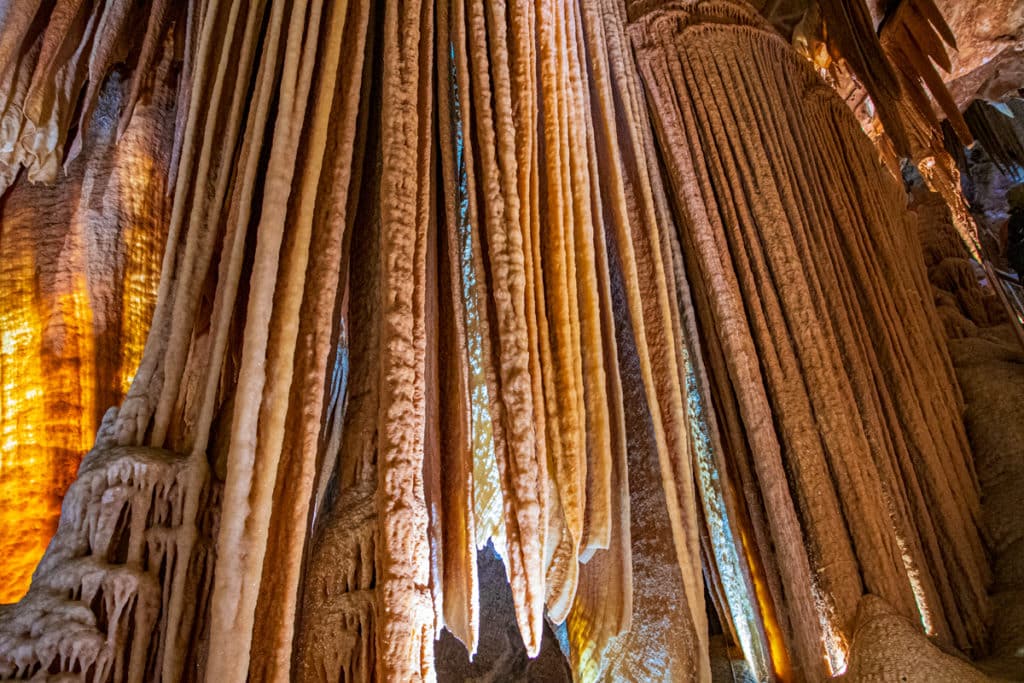
Many people consider the Orient Cave to be the most beautiful cave at Jenolan. This entire cave is covered in crystal formations. There is hardly a bare spot on the walls or the ceiling.
Two of the most iconic Jenolan formations are found here: ‘The Pillar of Hercules’ – a 10-meter natural sculpture and ‘The Indian Canopy’ formation that used to be featured on the Jenolan Caves logo. The cave passage is quite narrow so you are always close to the crystals. (More on exploring Orient Cave below).
Temple of Baal Cave
The Temple of Baal Cave has only two chambers but they are some of the most beautiful at Jenolan. The Temple chamber is also one of the largest chambers at Jenolan, second only to the Cathedral in the Lucas Cave. The most famous formation at the Temple of Baal Cave is ‘The Angel’s Wing’ – a large white shawl that resembles a pair of wings.
River Cave
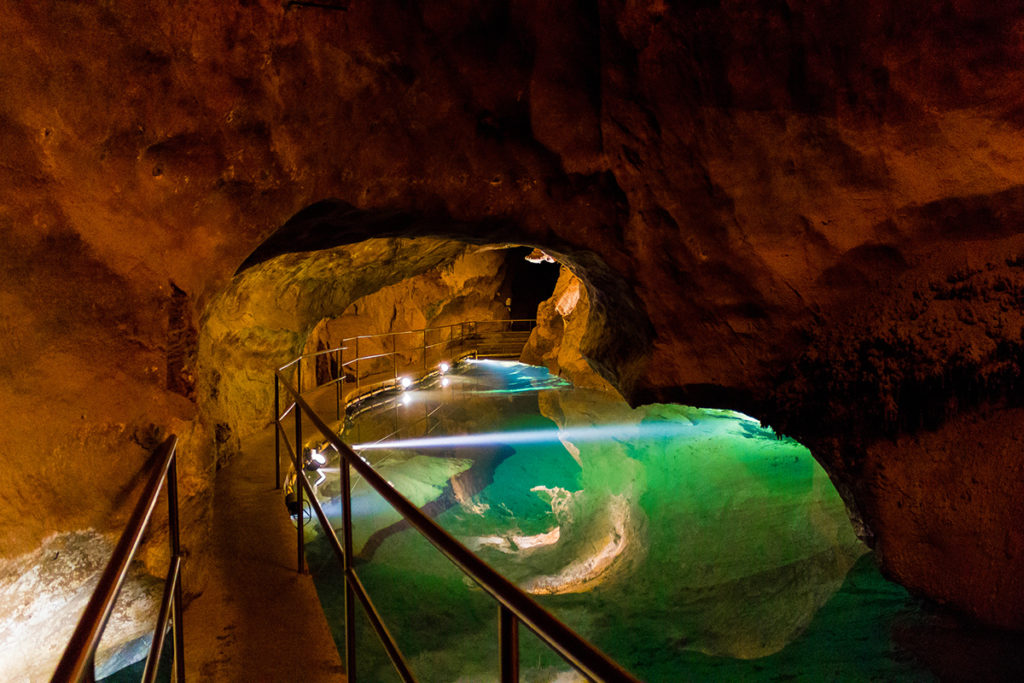
While the Orient and the Temple of Baal caves have the most beautiful formations at Jenolan, they don’t have a river running through them. The best river cave at Jenolan is, not surprisingly, the River Cave. Apart from the beautifully light-up river, the River Cave is home to some spectacular formations like the ‘Giant Shawl’, a magnificent stalagmite – the ‘Minaret’, and the biggest column at Jenolan – the ‘Grand Column’.
Imperial Diamond Cave
The Diamond Cave is a delicate passage lined with many unusual crystal formations, like pure white crystals tinted with multiple shades of pink, cave corrals, Dogtooth Spar crystals, and shelf stone. The famous ‘Gem of the West’ formation at the end of the tour is a medley of helictites, stalactites, stalagmites, shawls and wave crystals.
Lucas Cave
Lucas Cave is perhaps the best-known of the Jenolan caves. It features the widest cavern in all of the Jenolan system, which, combined with high ceilings, gives the impression of an unearthly cathedral. In terms of formations, Lucas Cave is home to the most photographed limestone formation of the Jenolan – ‘The Brocken Column’ and areas of ‘white lace’ that hang in the narrow walkways between the chambers.
Imperial Cave
The tour of the Imperial Cave follows an ancient river bed that contains a variety of marine fossils embedded in the limestone roof and walls of the cave. At the entrance to the cave, you can see the bones of a Tasmanian Devil (the species became extinct on the mainland around 1,000 – 3,000 years ago).
Chiefly Cave
The Chifley Cave is one of the shorter tours at Jenolan and it is recommended as the best option for people with children. It is also the only cave where coloured lights are used. In terms of crystal formations, Chifley is home to one of Jenolan’s best examples of ‘spar’ crystals.
Ribbon Cave
If you miss the opportunity to visit Jenolan caves on a small group tour during the pandemic, here is your second chance. All tours of Ribbon Cave are small group tours due to the delicate environment of this cave. Ribbon Cave is marketed as an addition, something to do once you have seen one or two of the main caves.
Another bonus of taking a tour of the Ribbon Cave is that to get to it, you have to pass the entire Orient Cave. So it’s practically two tours in one. Although, you don’t stop to admire the stunning formations of the Orient Cave. And you will want to, believe me.
Exploring the Orient Cave
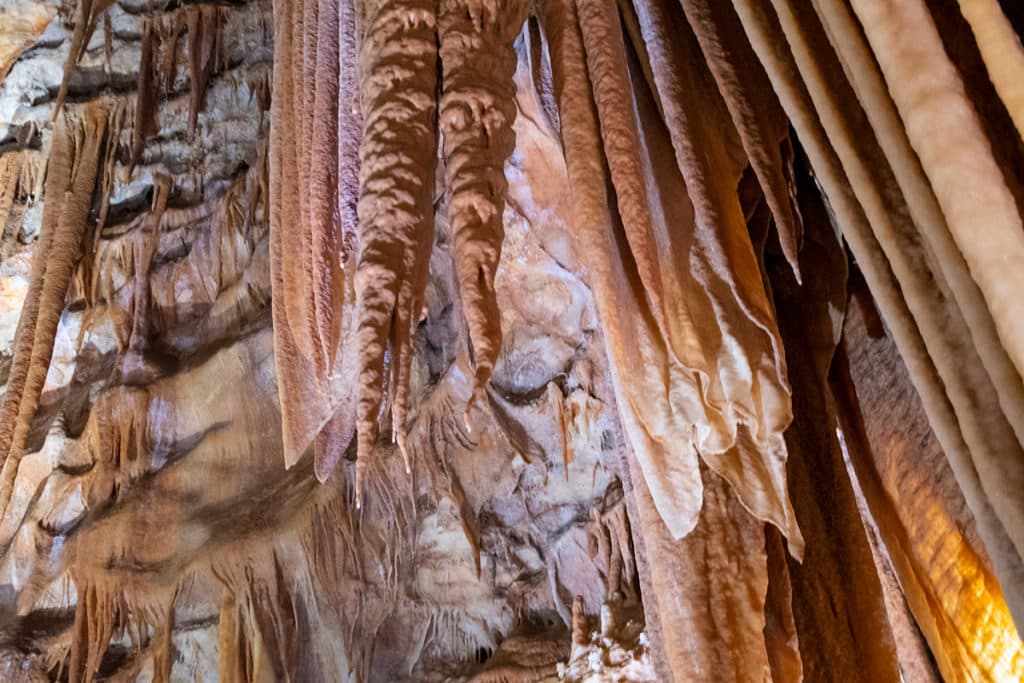
The Orient Cave was discovered 38 years after Jenolan Caves became a protected reserve, so its stunning formations have been preserved from the start.
The two Jenolan guides who discovered the Orient Cave in their free time in 1904 named the cave and its main chambers after the most exotic locations they could imagine. That’s why there are Persian, Egypt and Indian chambers in the cave.
We started the tour by walking through a fairly long Binoomea Cut – a shortcut that’s been cut through sheer rock in 1954. This long, narrow tunnel looks, for all intents and purposes, just like Stalin’s underground nuclear bunker in Moscow.
After walking through a few metal doors, we finally entered the ‘lobby’ of the Orient Cave known as Bat End (not to be confused with Bilbo’s Bag End).
Back in the days before the shortcut tunnel, visitors used to enter the cave from the opposite end, and as they travelled through the chambers, they flushed the resident bats. Fleeing from the disturbance, bats would come to this chamber and congregate here in large numbers. Today, there is no sign of the bats at Bat End, to everyone’s relief and my disappointment.
From Bat End, we entered the dimly-light stairwell and followed it up to an even more dimly-light ‘Persian Chamber’. Then, Jacob, our guide, turned on the spotlights concealed behind the crystal formations and our world was immediately transformed into an otherworldly wonderland. Every inch of the cave surface was covered in the most unexpected giant formations – stalagmites, stalactites, columns, shawls and straws. You didn’t know where to look first.
As we walked along the metal walkway, on our right, the cave wall was dominated by the ‘Petrified Forest’ made up of flowing formations of all shapes and sizes. On our left, the floor dropped a few meters, and from the well below, the towering formation of the ‘Pillar of Hercules’ rose to meet the ceiling. Standing 10 meters tall, this pillar is the tallest stalagmite at Jenolan caves.
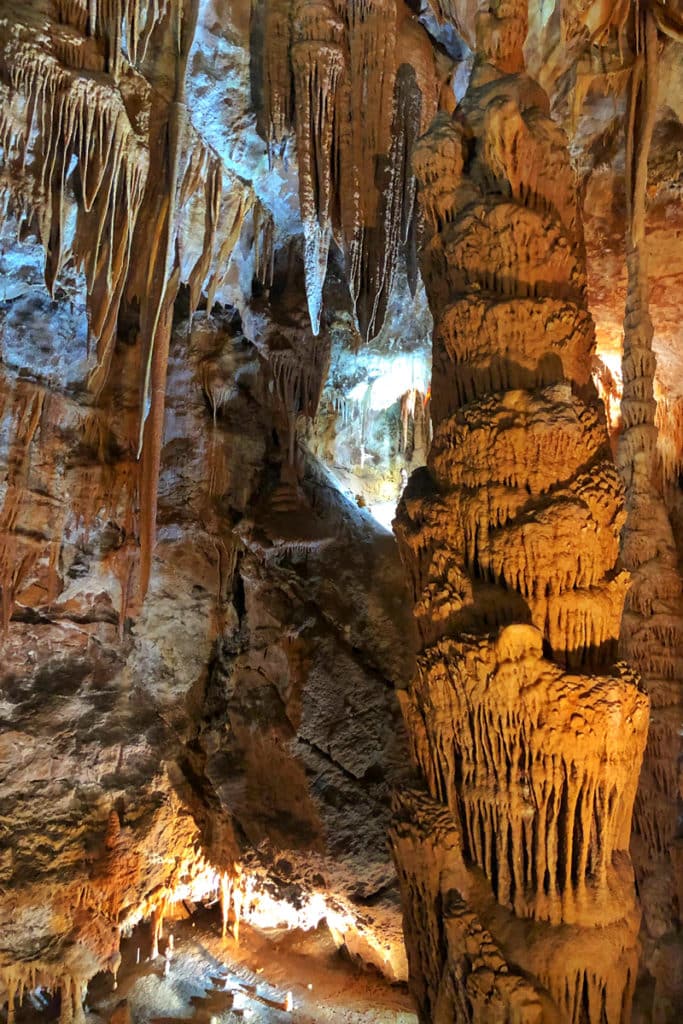
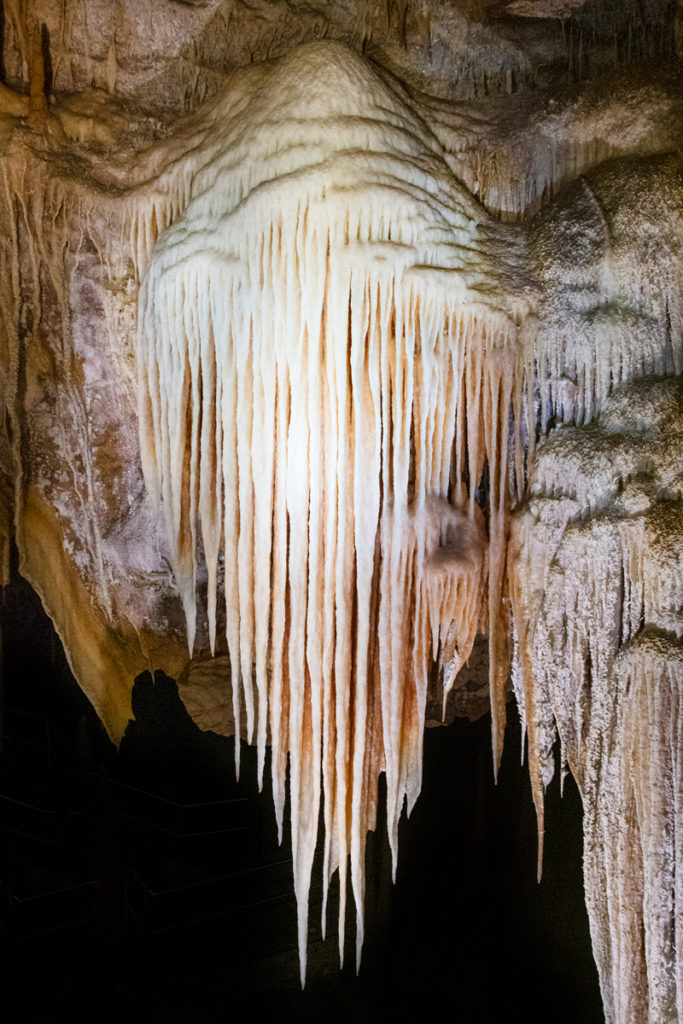
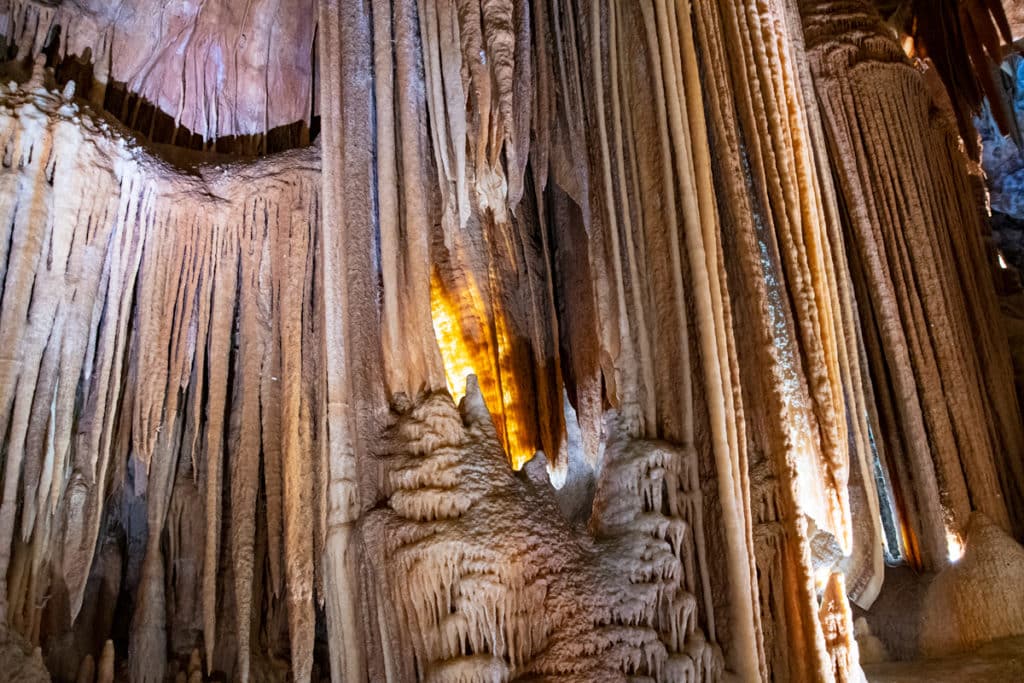
From the ‘Persian Chamber’ we followed a narrow passage down to ‘The Jungle’ and onto the ‘Egyptian Chamber’. The shawls in this chamber are absolutely jaw-dropping. They are huge (second largest at Jenolan) and boldly striking. For me, these organ-pipe-looking formations were the most memorable individual feature of the Orient Cave.
But we still had more awe-inspiring formations to discover. As we descended into ‘The Indian Chamber’, we were greeted by the view of one of Jenolan’s most famous formations – ‘The Indian Canopy’.
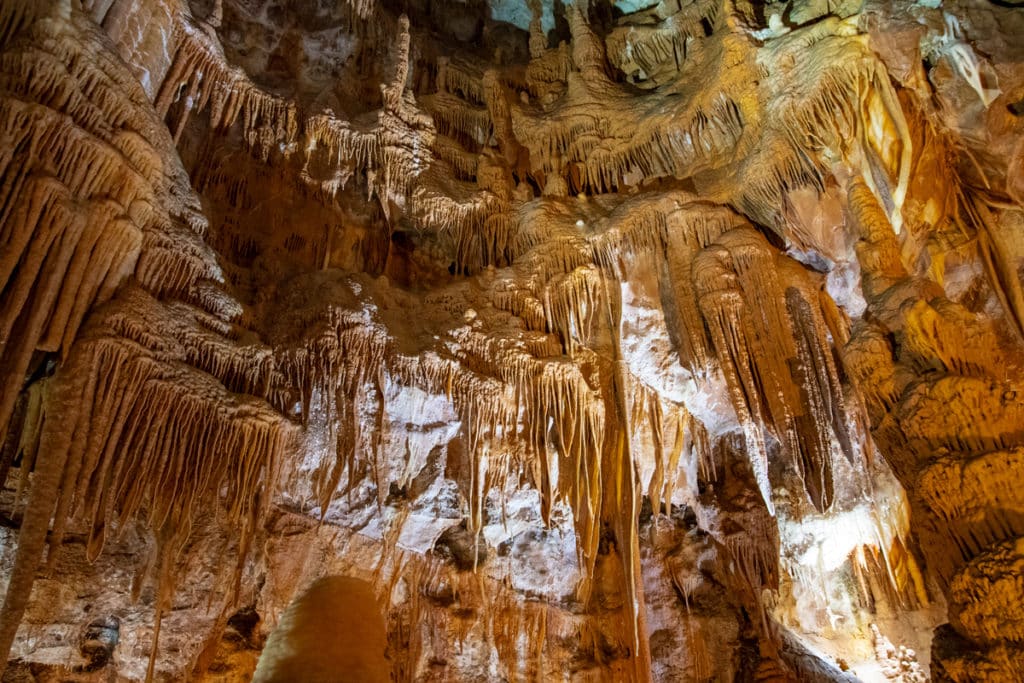
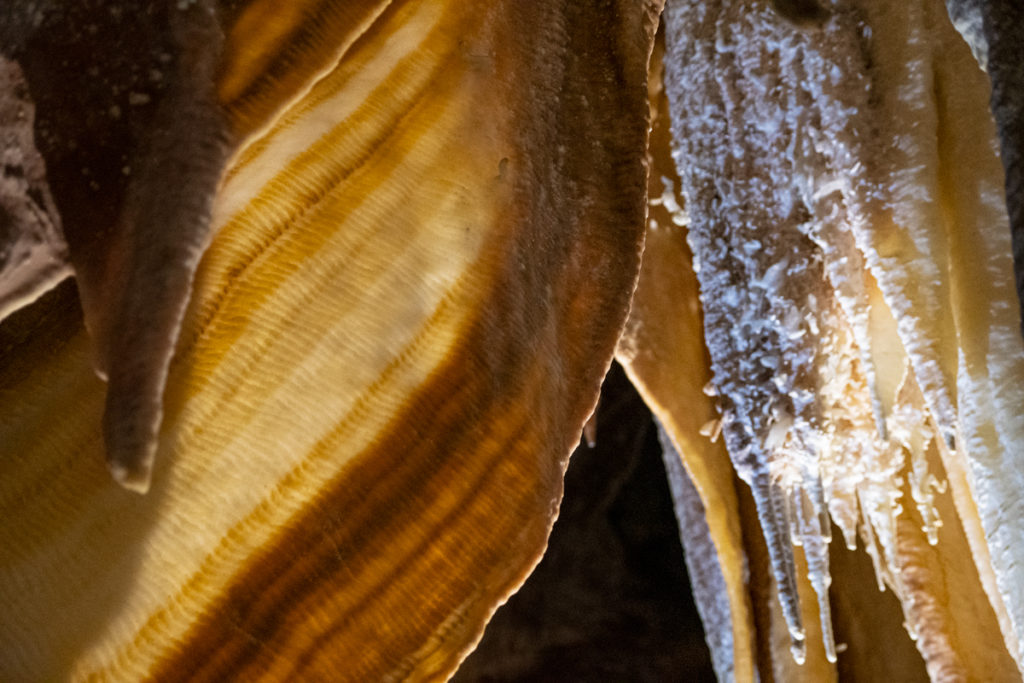
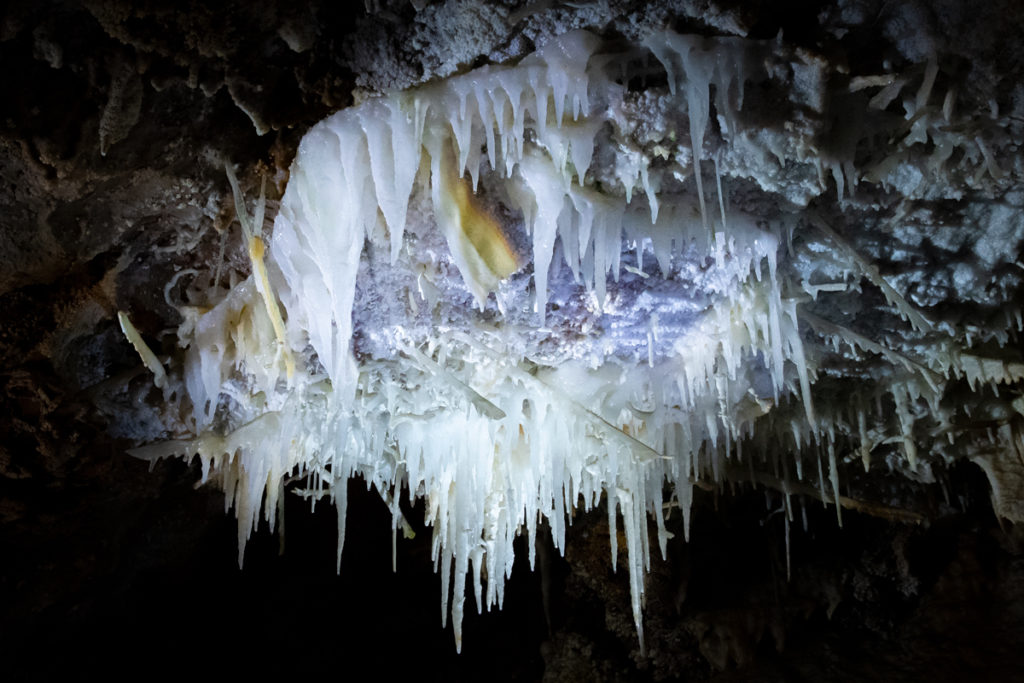
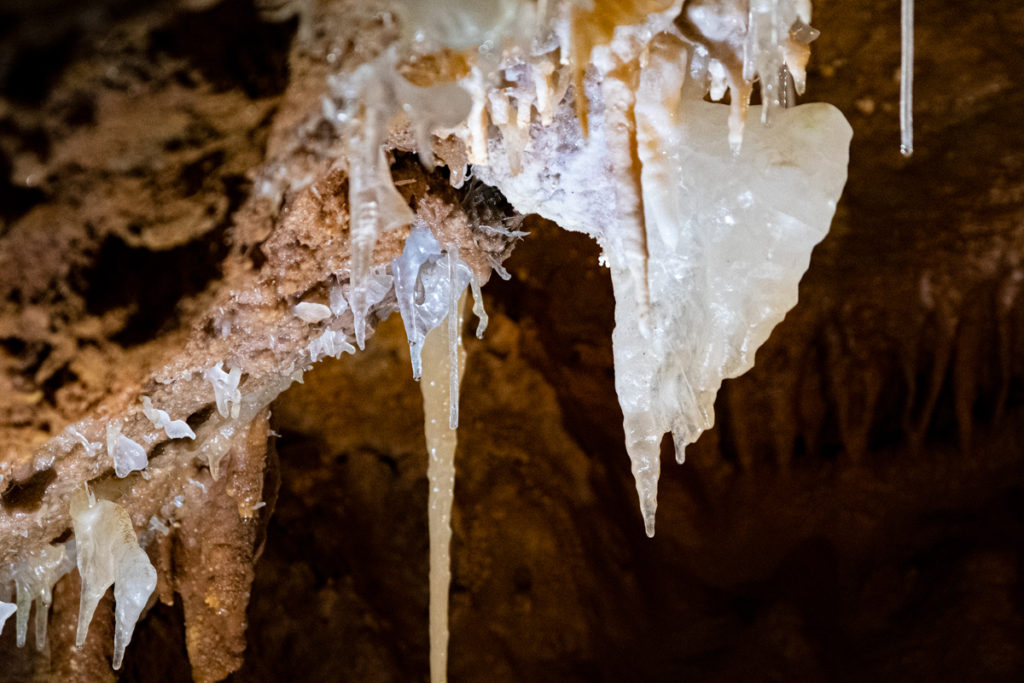
Lake Lyell
Driving from Tarana towards Lithgow you pass Lake Lyell – a huge man-made lake popular with water sports enthusiasts. If you find yourself in the upper Blue Mountains on a sweltering summer day, the lake would be a good option for some water fun. It does get as crowded as Sydney beaches though.
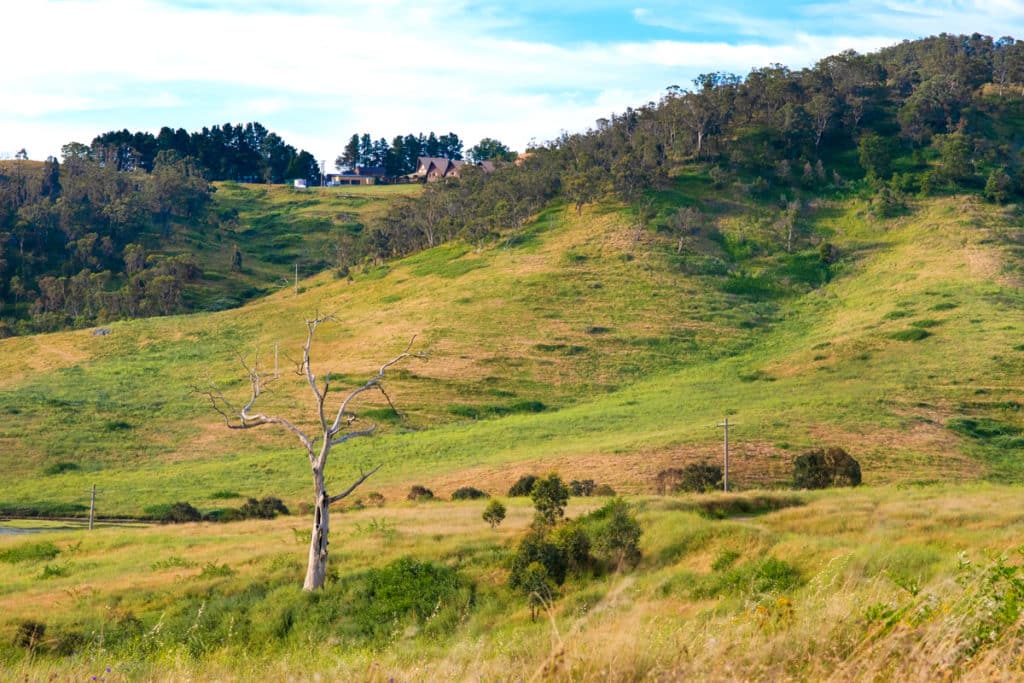
Visit Hassans Walls Lookout
As you approach Lithgow, make sure to check out Hassans Walls. Hassans Walls Lookout is possibly the most panoramic lookout in the Blue Mountains, and it is definitely the highest at approximately 1,100 metres above sea level. The entire Hartley Valley is visible below as well as Mount Wilson, Mount York, Mount Tarana and Mount Blaxland.
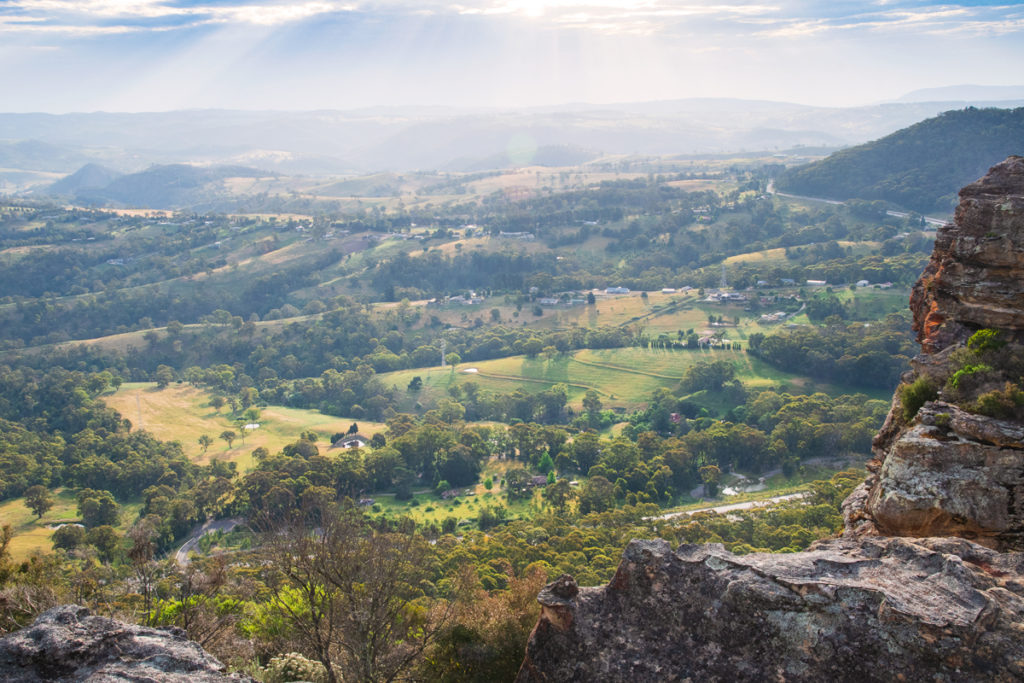
The 180-degree views from the tip of the boardwalk are simply breathtaking. There is also a little cave just to the right of the main lookout that offerers a different perspective as you look down into the valley through the cave mouth of the cave.
On the short walk from the lookout to the carpark, you also get a nice view of the Great Western Highway down below.
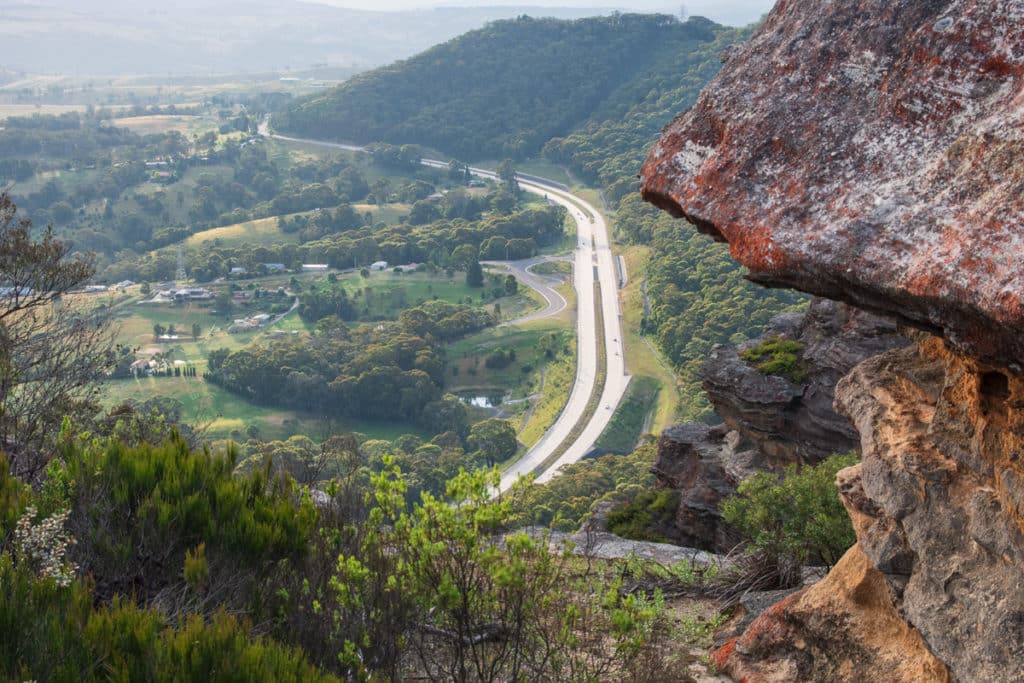
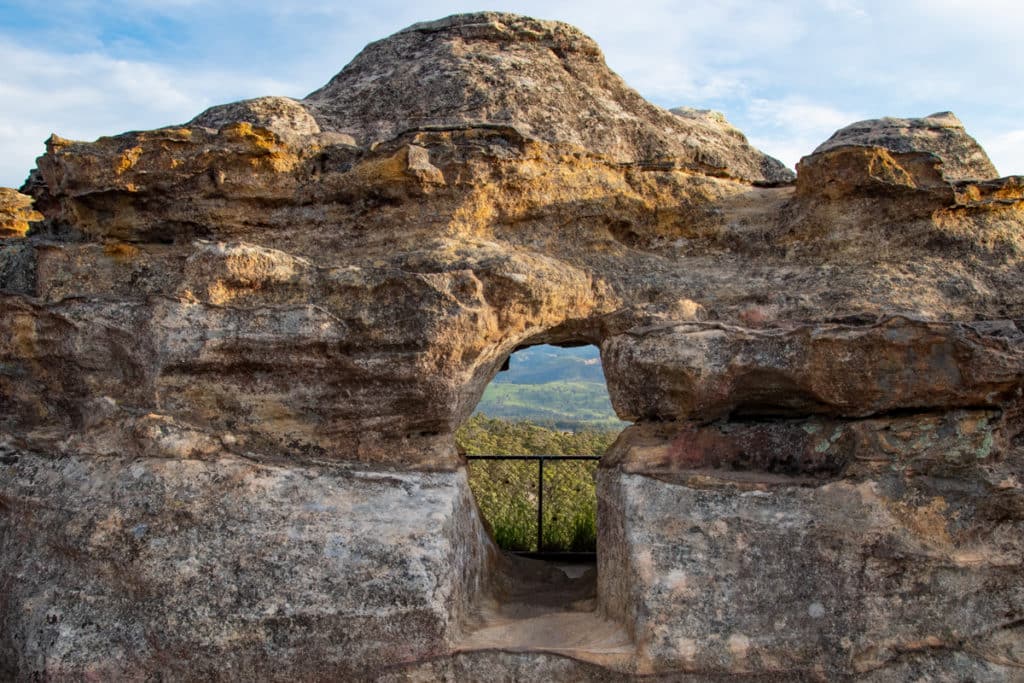
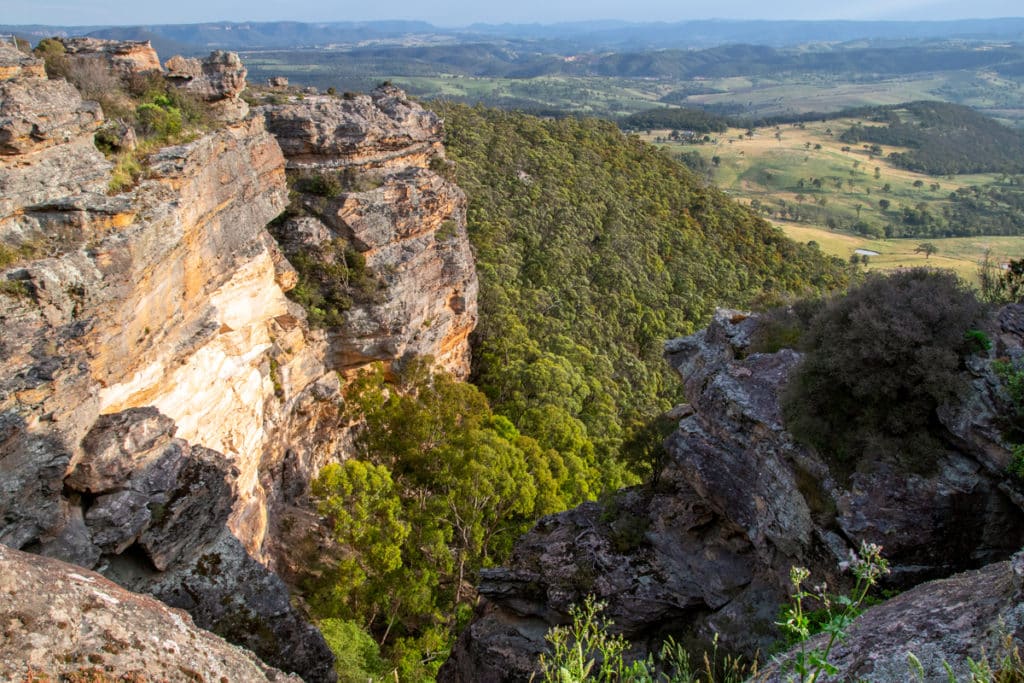
Visit historic Hartley Village
If you have more time, then head towards the Great Western Highway to Hartley village – an exceptionally well-preserved century-old village, 12 kilometres from Lithgow. Set among pastures and remnant cottage gardens, Hartley is a quaint little village nestled in the valley of the River Lett. It is one of the first rural settlements west of the Blue Mountains, dating back to 1837. And it is one of the best-preserved such villages in Australia.
The main building in the village is the Court House, which operated for over fifty years and dealt with a constant stream of robbers, thieves and convicts. In fact, one of the most interesting exhibits in the little museum in the village is the chilling job ad for a Flagelator that reads: WANTED Flagelator able to flog efficiently with minimum loss of labour of convict due to wounds.
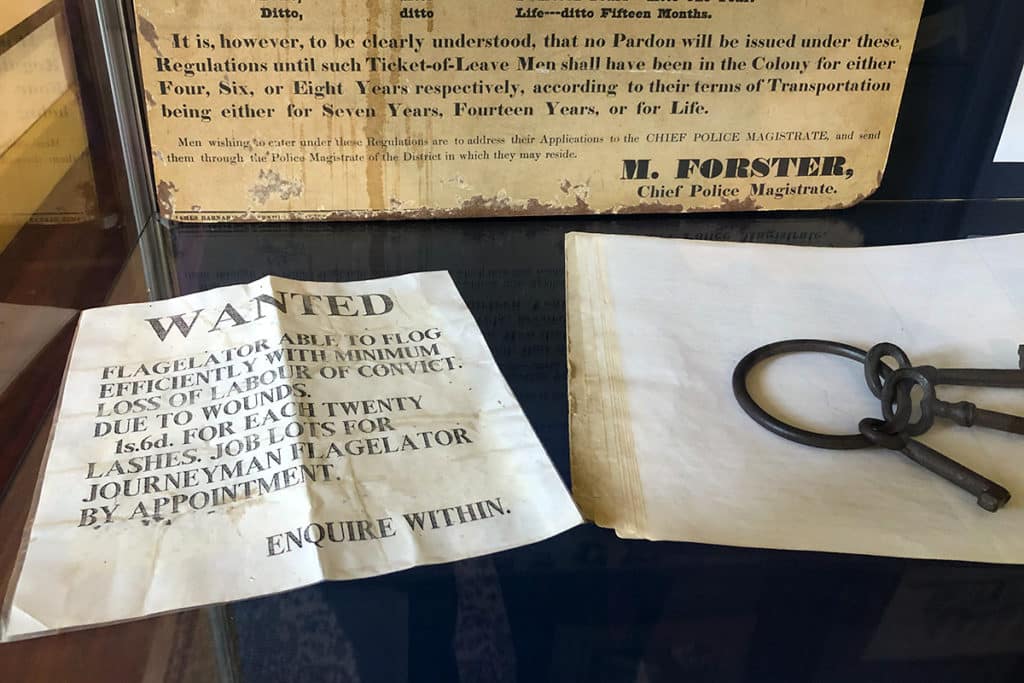
What are your favourite places to explore around the Jenolan Caves? Leave your ideas in the comments below.
More Things to do in the Blue Mountains
- The Lost World of the Grand Canyon Track in the Blue Mountains
- Blue Mountains by Train: Walks, Views and Waterfalls
- Blue Mountains Jenolan Caves – how to explore the world’s oldest crystal caves
- The Giant Stairway and the Dardenelles Pass – An Epic Walk in the Blue Mountains
- Prince Henry Cliff Walk in the Blue Mountains – Epic Views and Waterfalls
- Echo Point to Scenic World walk in the Blue Mountains
- Best way to visit Wolgan Valley & Lithgow Glow Worm Tunnel
- South Lawson Waterfall Circuit Walk – One Walk, Five Waterfalls
- Finding Fireflies and Glow Worms in the Blue Mountains
- Glow worms and Waterfalls of Horseshoe Falls Walking Track in Hazelbrook
And if you are planning a trip to the caves, pin this post for later.
